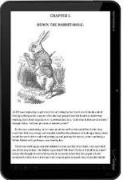 eBooks have been around for almost 4 decades now. The earliest eBooks were those in Project Gutenberg, the oldest digital library, founded in 1971. eBooks and eReaders have gained a lot of popularity in the last decade or so. A large of people are increasingly moving towards eBooks to satisfy their literary needs.
eBooks have been around for almost 4 decades now. The earliest eBooks were those in Project Gutenberg, the oldest digital library, founded in 1971. eBooks and eReaders have gained a lot of popularity in the last decade or so. A large of people are increasingly moving towards eBooks to satisfy their literary needs.
eBooks
For those who have heard of eBooks but don’t really know what they are, an eBook stands for electronic book. These eBooks can be read on computers or other electronic devices. For starters, if I were to ask how would you carry your favourite books, each around 1000 pages on an international flight which you may or may not want to read again, what would you do? Yes, you do have to carry your clothes and other essentials too. In such a case, chances are, you’ll leave the books at home. eBooks were created to solve this exact problem. eBooks are mainly for portability and providing convenient and fast access to books, with newer devices supporting news, magazines and internet surfing. eBooks come with various memory options ranging from limited internal memory allowing you to store around 200 books to ones with an expandable memory of up to 64GB allowing you to store as many as 50,000 eBooks. A huge number of eBooks are currently sold by publishers all over the world.
Some of the oldest written scripts (Cuneiform script) date back to the 30th century B.C. Our ancestors drew paintings and symbols on clay and stone for very many years. We then evolved from writing on clay to writing on papyrus (made from the pith of the Papyrus plant) and other materials, eventually coming to the invention of paper which was superseded by digital information. We have come a long way from reading pictures and writings off stone and clay that can last for ages, to reading books, magazines and novels on small hand-held devices that can be erased by the touch of a button, but if not can stay for just as long. These handheld devices are capable of automatically updating news and other necessary information within a few seconds of the information becoming available.
eBook Readers
There are a large number of eBook readers currently available in the market. These eBook readers differ from each other in a number of ways such as the underlying operating system, hardware capabilities, available screen real estate, display technology and others. These eBook readers are capable of rendering different types of eBook formats; ePub, PDF, mobi, txt and azw being some of the most widely used. Due to the large number of eBook readers available, deciding which one to go for is not an easy task. Especially when some of them cost around £500. Making an informed decision by reviewing each and every device can take hours on end, seldom giving fruitful results and making it a matter of personal preference. All the devices have rights and wrongs, pros and cons, winning features and well, some not-so-good features.
ePub Format
The ePub format has gained popularity among eBook makers as it is designed for re-flowable (content presentation adapts to the output device) and re-sizable content . A large number of readers are capable of rendering the ePub format in a variety of form factors. These include traditional PCs and laptops, tablet PCs, Android and iPad devices, eInk devices in several configurations ranging from ‘paperback-size’ to A4-equivalent, mobile telephones and MP3 players, and so forth.
CC Image by Rodrigo Galindez






